
Issue 077
July 2011
Pete Irving is a professional welterweight fighter and Fighters Only’s resident fight expert. Dominate from the seat of your pants with this essential guide to butterfly guard sweeping.
The sitting guard is also known as the butterfly guard, so called because the position of the hooks is reminiscent of a butterfly’s wings. The sitting guard is distinct from other types of guard by the notable absence of set-ups for submissions. That is not to say that sub set-ups can’t originate from sitting guard, but they will invariably involve a transition to another distinct position. The sitting guard is essentially about sweeps or stand-up escapes. In this respect the sitting guard is more a way of wrestling from the sitting position than playing guard.
Posture: Butt back, chest forward. If you allow your chest to go back behind your hips you will easily be forced to your shoulders, neutralizing all your sweeps.
Leading Leg: One leg should be in the lead at all times. An equidistant hook placement will be easy to counter by pinching the knees together, neutralizing the sweeps.
Underhooks: Generally the underhook should accompany, and be supported by, the leading leg, especially when utilizing an over-under
Tie-ups: Furthering the idea of wrestling from the sitting position, all of the advantageous tie-ups from Greco-Roman wrestling will serve you well from this position. Collar ties, over-under, Russian 2-on-1 and double underhooks will all lead to powerful sweeps.
CLASSIC SITTING GUARD SWEEP
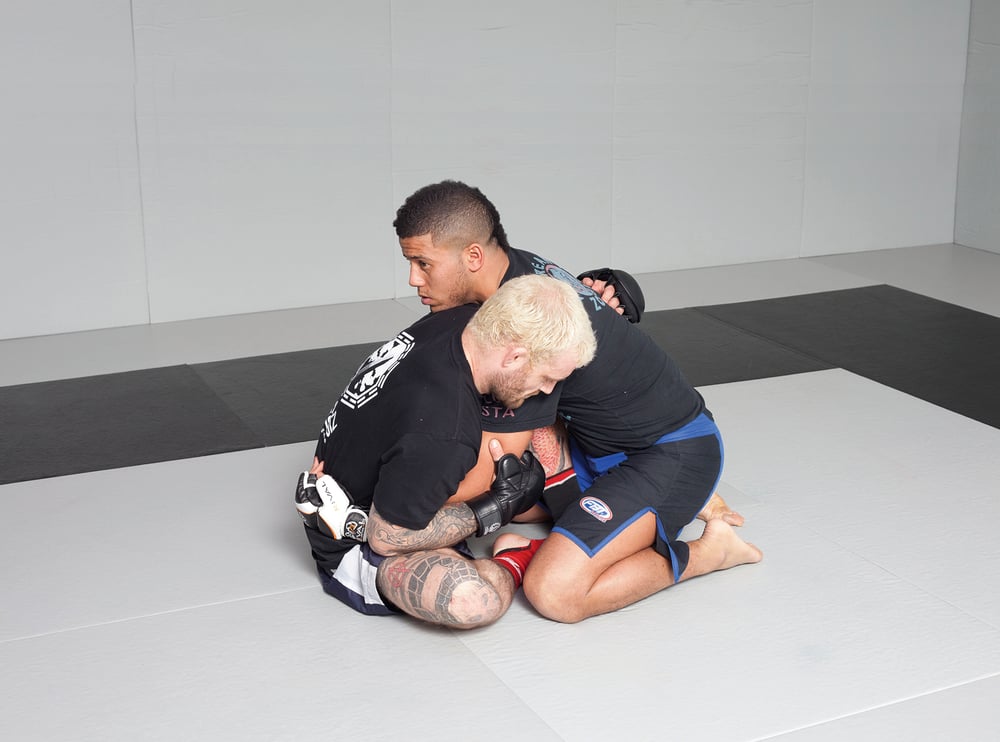
1 Pete (above, left) has Jason in his sitting guard, with an underhook on the far side.

2 With his thumb on Jason elbow joint, Pete forces the overhooked arm in towards Jason’s hip, neutralizing his ability to base out while the sweep is being executed.
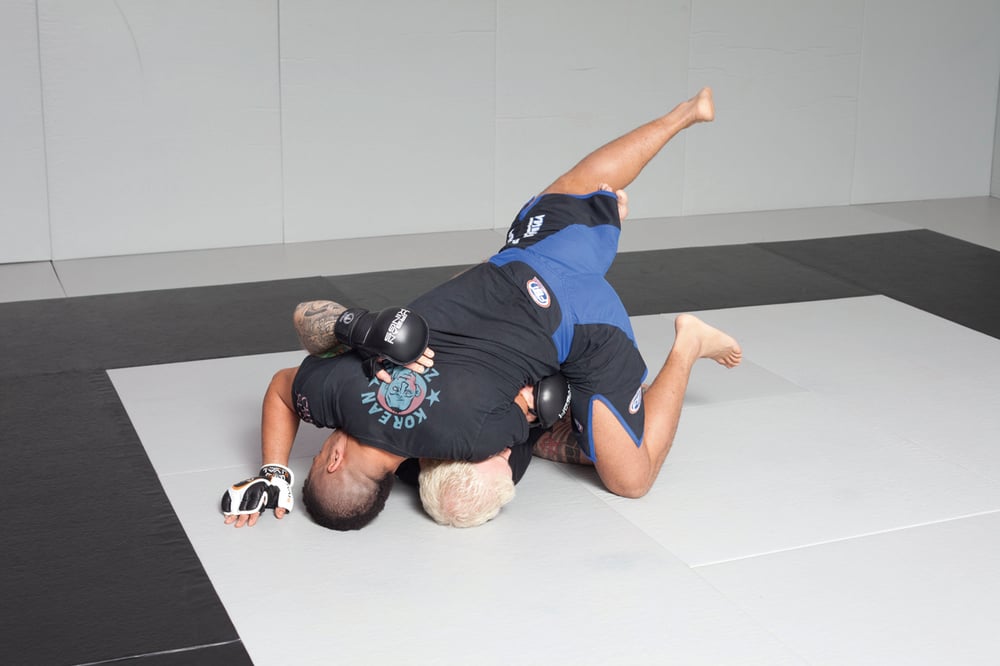
3 Pete falls backwards at a 45-degree angle, elevating Jason’s hips with the far leg.
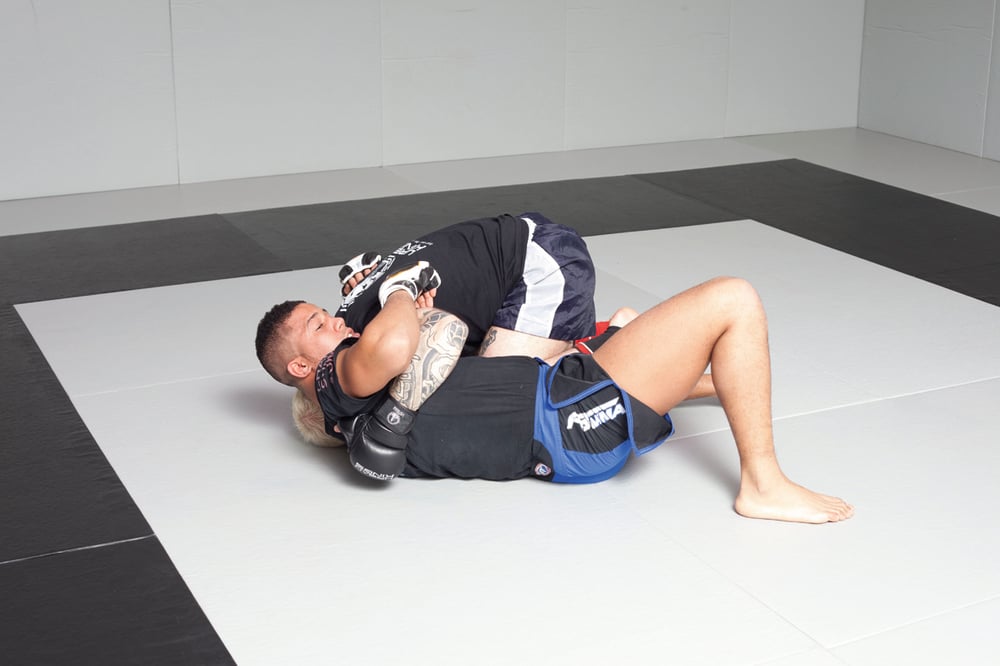
4 Pete keeps his underhook secure and starts to pass on the far side.
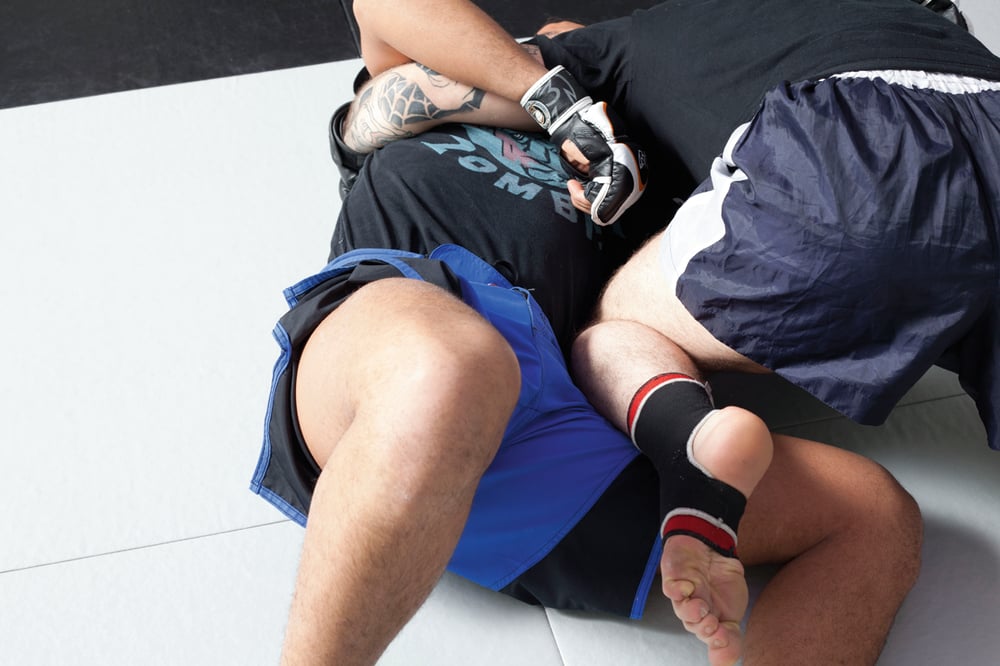
5 Reverse view. Pete’s knee slides across to the mat while he maintains the underhook.
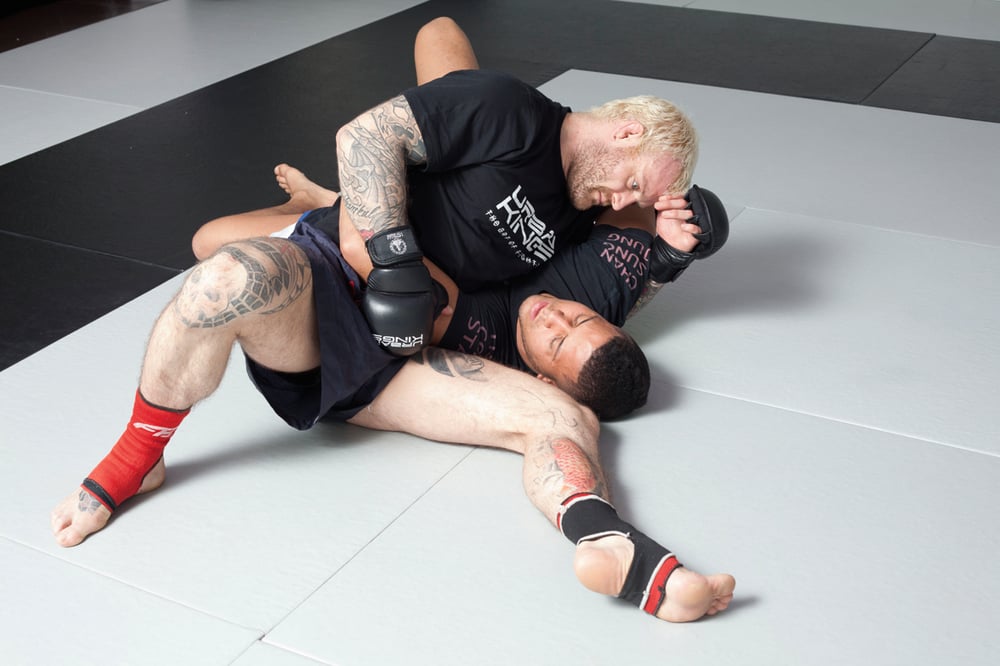
6 Pete slides under Jason’s arm completing the pass.

7 Pete reverses his base again to establish a standard side control pin.
DOUBLE UNDERHOOKS, OVER-THE-TOP SWEEP TO BEAR-HUG TAKEDOWN

1 Pete has Jason in his sitting guard. Pete has an over-under.

2 Pete pummels in his near arm to establish double-unders and places his head centrally on Jason’s sternum.

3 Pete rocks back, elevating Jason’s hips in a fake attempt to throw him over the top. Pete knows Jason will base out on his hands, but his real intention is to upset his base.
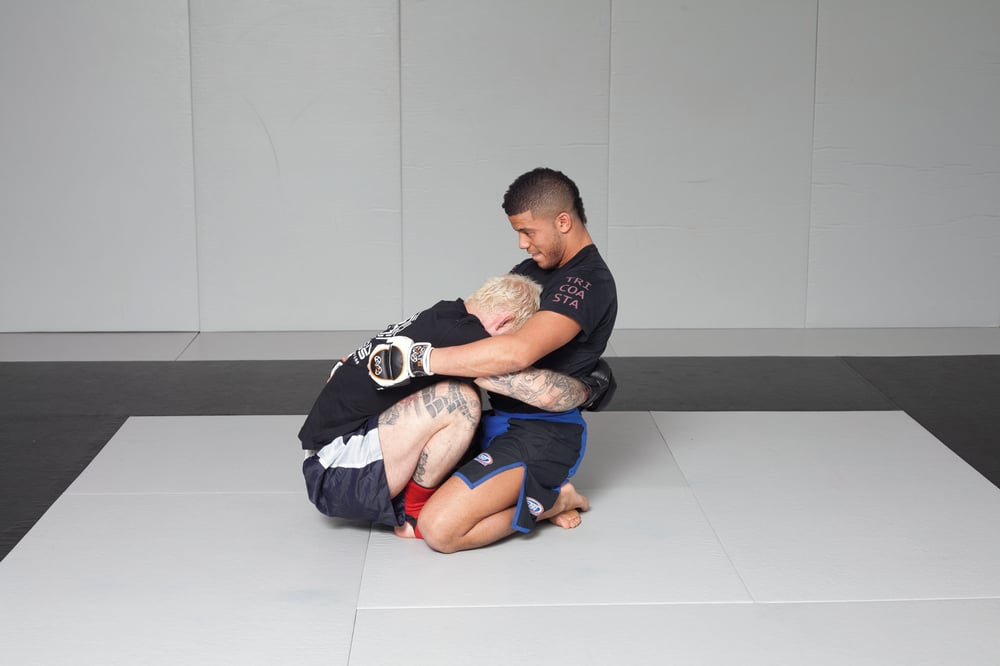
4 As Jason sits back down Pete pulls himself up with him, squeezing the bodylock tight and driving his head into Jason’s sternum.
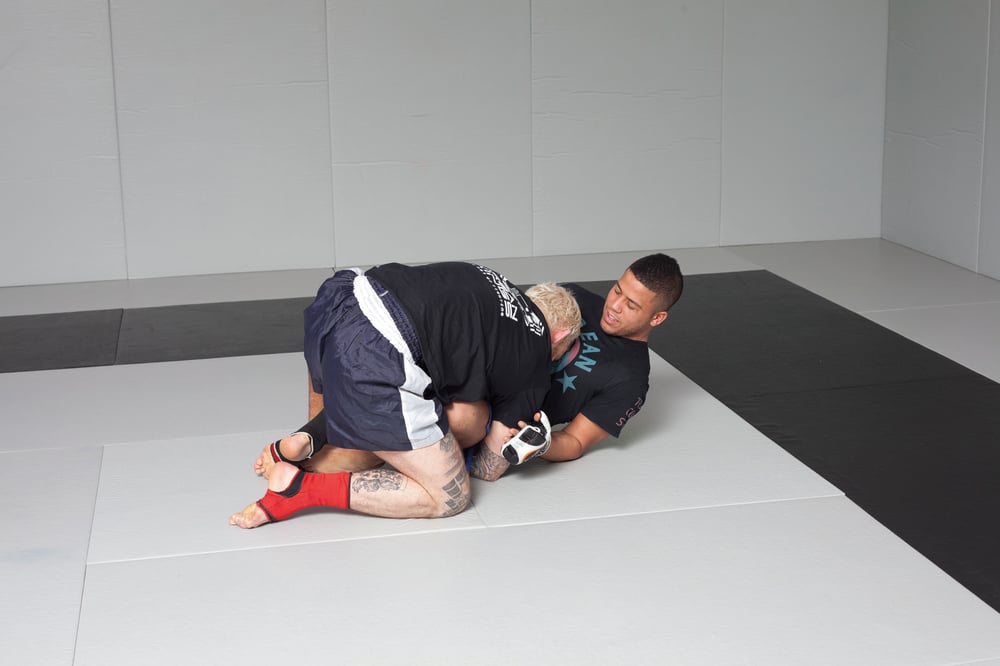
5 Pete keeps driving forward, pushing with his head and pulling Jason’s waist in. Pete starts to pass, placing one leg outside Jason’s legs and one leg inside.
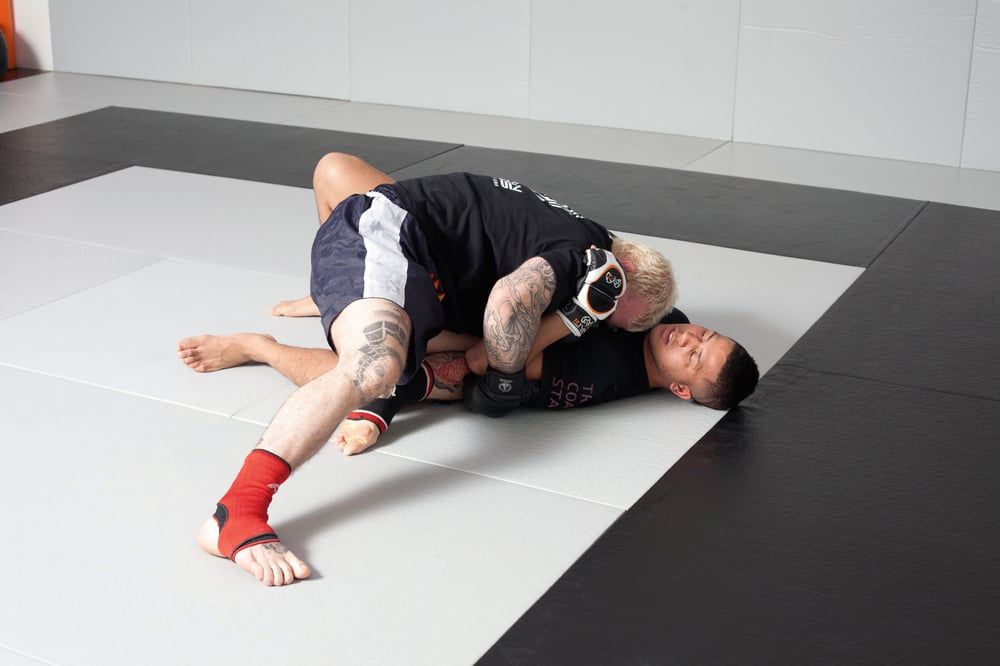
6 Pete slides the far knee to the near side, passing the guard.

7 Pete lifts Jason’s elbow and sits through to establish a good pin.
PINCH HEADLOCK TO KNEE PUSH SWEEP
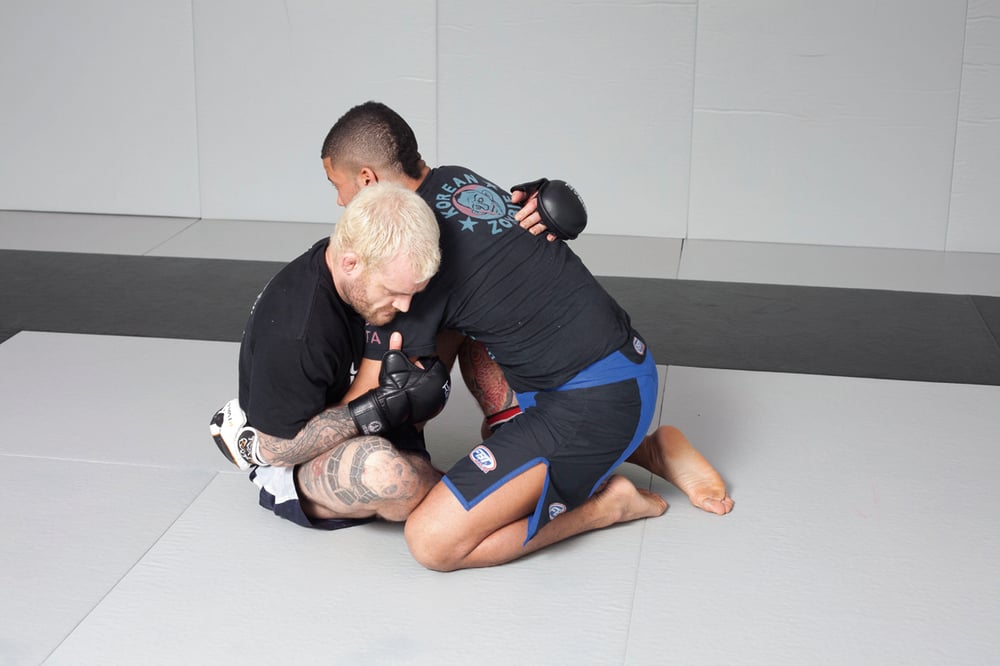
1 Pete has Jason in his sitting guard, underhook on the far side, overhook on the near side.
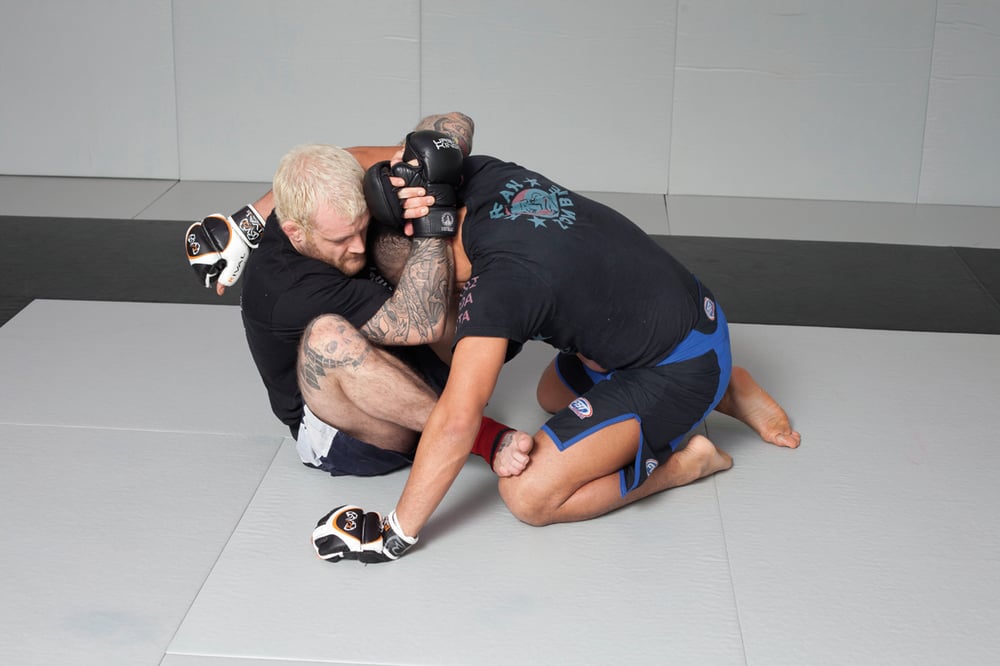
2 Pete lifts his underhook and relinquishes the overhook, meeting the hands in a gable grip. With the forearm pressed against Jason’s shoulder Pete is able to lever his underhook higher and bring down Jason’s head position. Pete simultaneously places his foot on Jason knee.
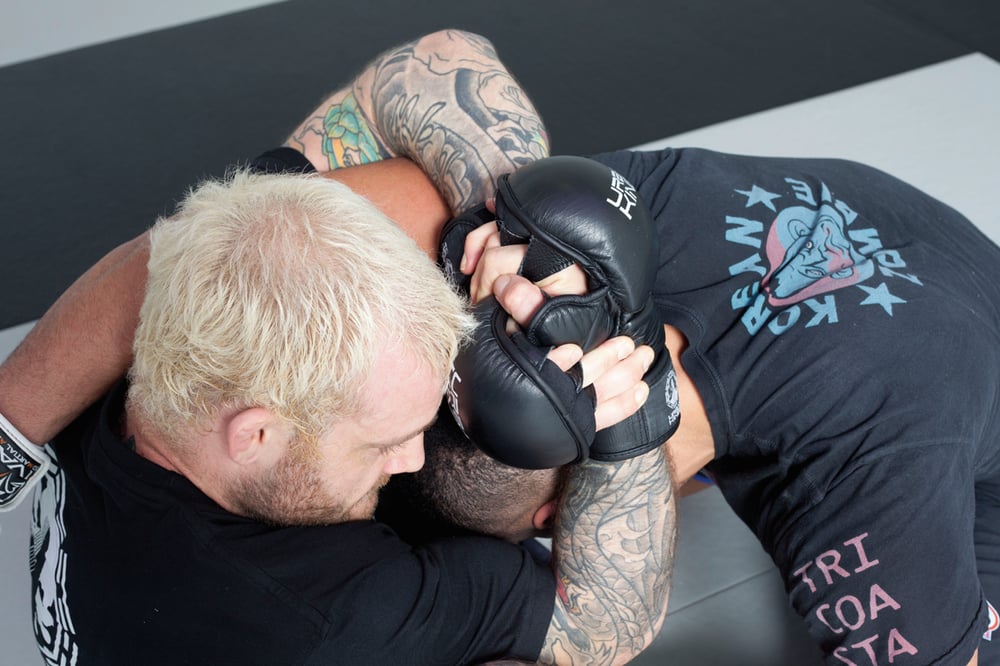
3 Close-up of grip detail.

4 Pete twists the pinch headlock as he kicks away the knee.
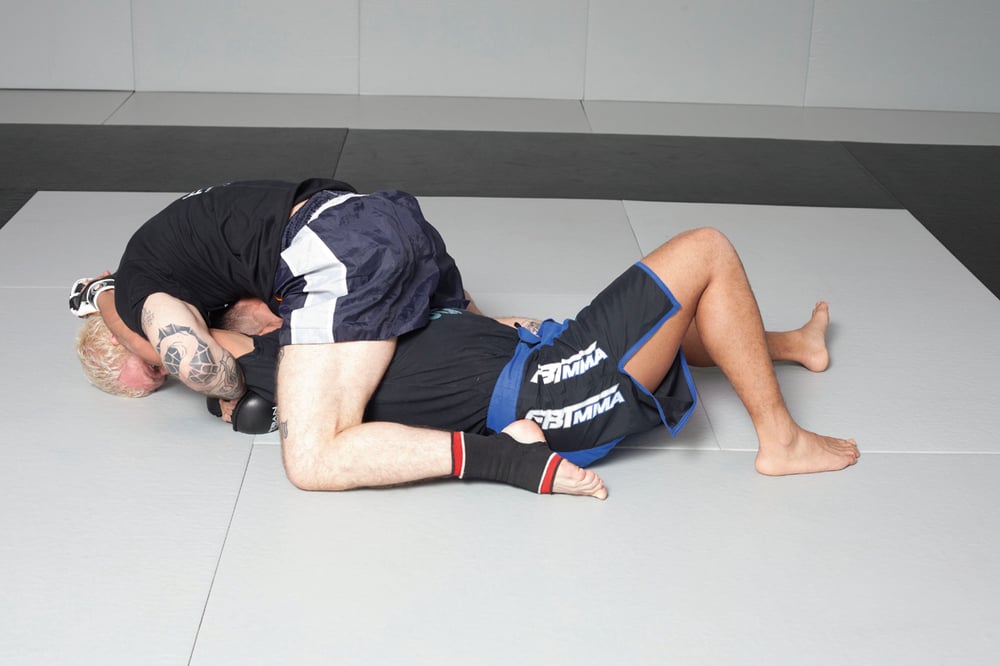
5 Pete continues to roll on top to take the mount without releasing the headlock.

6 Pete steps over to take a mounted triangle.










